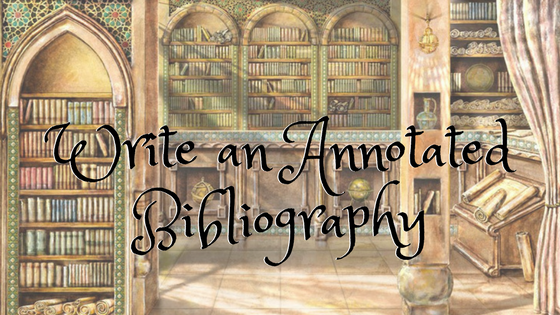Mar 15 2018

Bibliographies. They are not all the same. While everyone understands what is a bibliography – a listing of all of the resources used in a piece of research writing – not everyone understands how to format them and, even more, what is an annotated bibliography.
The Annotated Bibliography – A Definition
Like a regular bibliography, the annotated form is a list of citations to all of the materials that were used in completing a research work. When a student is asked to develop an annotated bibliography, there is much more involved. Each citation will also contain a description and evaluation piece, usually no more than 150-200 words. This paragraph is called the “annotation,” and its purpose is to provide useful information to readers who may want to conduct research on a similar topic.
Students who have never written an annotation before may struggle with this assignment. They specifically don’t understand how is synthesizing different from writing an annotation. It’s difficult to provide a description and evaluation in so few words. But many others have done this, and you can too.
Steps for Crafting an Annotated Bibliography
Perhaps the easiest way to understand what is a bibliography with annotations is, is to read several examples. These you can find on any number of academic writing sites, such as Purdue Owl, or the guidelines published by universities, such as Princeton and DePaul. You will have a good general idea of what is included, before you begin to craft your own. Once you do begin this process, this guide will show you exactly how to write an annotated bibliography step-by-step. Following these steps will ensure you get it right.
- Know Your Purpose: There are two purposes for annotated bibliographies – descriptive and informative and/or critical and analytical. The type you will write depends upon the guidelines provided by your instructor. Sometimes, you will be required to combine both purposes. Just be certain that you know what your instructor wants.
- Writing the Descriptive/Informative Annotation: Here, you will be describing a source and why it is an appropriate fit for research on your topic. You will list the author’s arguments and conclusions, but you will not be evaluating them. Suppose you have a written a research piece on Emily Dickinson, 19th century American poet. You have read a piece from a literary critic who is considered an expert on Dickinson, and his expertise has led him to conclude that her poetry all reflected her emotions regarding an unrequited love for an ineligible man. You will describe the evidence he has used to come to the conclusion. However, other than to say that this is an important perspective to consider, you will not evaluate his conclusion per se.
- Writing the Analytical/Critical Annotation: This will describe the piece and the points the author has made. In addition, though, you will be asked to critically analyze those points and their value/veracity. The same annotation on the Dickinson, then will include his evidence, but will also include your evaluation of his conclusion. Thus, you might state that he “cherry-picked” only those poems that supported his thesis and ignored many others that did not.
- Putting together an Outline for Your Annotation: Let’s say you are writing annotations that are both descriptive and critical. You should use this simple outline template to be sure you have included everything:
- Purpose of the work
- Content summary
- Audience for which it was written
- Level of relevance to your topic
- Strength, weaknesses of author’s points and/or opinions
- Be certain that the actual citation is placed first, according to the required format style. While most will be in the common styles, there are some more rarely used ones, such as IEEE format. Just be certain to check to get it right.
- Check to be certain know how is synthesizing different from writing an annotation. Abstracts provide a synthesis. While they contain the same elements as annotations, they speak to more in-depth elements as well.
Re-Capping
For newbies to annotated bibliography writing, the task will at first be challenging. There is the struggle to say what needs to be said in so few words. One way to work on this is to write a longer piece, then go back and keep cutting until the correct word count is achieved.
If you spend time reading annotations that others have written, studying examples that are provided by reputable college-related writing guidelines, and using the steps that we have offered above, you will do well. Just remember, it takes practice. The more of these you do, the easier it gets – that’s a promise.
